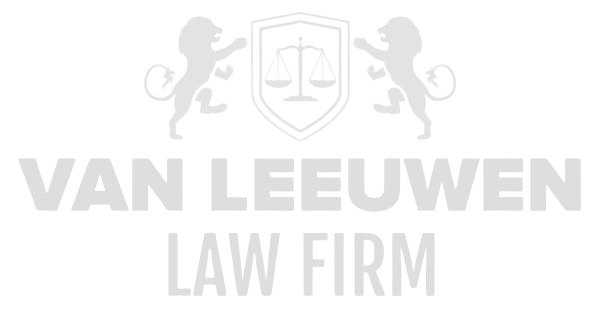Discovery & Analytics forms an indispensable pillar in today’s fight against financial and economic crime, a domain where nationally and internationally operating companies, their directors, regulators, and government agencies face serious allegations. The impact of such suspicions extends far beyond the legal arena: it not only undermines an organization’s operational continuity but also fundamentally damages the reputation and trust of stakeholders. The ability to purposefully search and analyze large volumes of data plays a crucial role in detecting, interpreting, and substantiating facts that are essential for a sound response and effective risk management.
The increasing complexity of financial networks and the digitalization of information sources bring new challenges that exceed classical investigative tools. Discovery & Analytics provides the tools to tackle these challenges through a combination of advanced technologies, methodological acumen, and deep legal knowledge. This enables involved parties to quickly identify, contextualize, and validate relevant information, thereby preventing incomplete or incorrect interpretations. The careful unraveling of connections within large and often heterogeneous datasets lays the foundation for insightful analyses that are vital for preventing escalations and safeguarding integrity.
Information Extraction from Complex Datasets
Discovery & Analytics primarily focuses on effectively extracting relevant information from extensive, complex, and often unstructured datasets. This process requires a combination of technical expertise and analytical sharpness, as data often comes in diverse formats and from various sources, ranging from emails and financial transactions to contracts and log files. Filtering this data using advanced search algorithms and machine learning techniques enables investigators to identify crucial documents and patterns that might otherwise remain unnoticed.
The challenge lies not only in the volume of data but also in the complexity of the context in which this data must be interpreted. Understanding legal terminology, recognizing sector-specific jargon, and detecting subtle nuances in communication require close collaboration between data scientists and legal experts. Through this multidisciplinary approach, not only is the relevance of the retrieved information guaranteed, but also its applicability within legal procedures and compliance investigations is ensured.
Moreover, the integration of artificial intelligence and natural language processing enables increasingly sophisticated filtering and clustering of data. This makes it possible to quickly establish links between seemingly unrelated data, for example, by identifying suspicious transaction chains or communication patterns. Consequently, strategic insights can be gained that guide follow-up investigations and legal strategies. The strength of Discovery & Analytics lies in its ability to distill the essential from an abundance of data, with the ultimate goal of supporting effective decision-making.
Pattern Recognition and Anomaly Detection
A core component of Discovery & Analytics is the ability to recognize patterns and signal deviations that may indicate fraud, corruption, or other forms of economic crime. Identifying such patterns requires in-depth analysis of large datasets where normally hidden connections and behaviors occur. By comparing historical data with current transactions and processes, deviations can be identified that serve as starting points for further investigation.
The complexity of these analyses increases due to the diversity of fraudulent methods, which continuously evolve and become more sophisticated. This makes it necessary to be flexible in applying analytical techniques, where statistical methods are combined with artificial intelligence and behavioral science insights. This combined approach allows not only for the detection of known fraud types but also for the identification of new, unexpected behaviors that may indicate breaches of integrity.
The use of anomaly detection also helps reduce false positives, a common problem in automatic screenings. Through careful calibration of analytical methods, it is avoided that innocent deviations lead to unnecessary investigations, which benefits both the efficiency and effectiveness of the inquiry. This contributes to a focused deployment of resources and increases the confidence of those involved in the analytical process.
Legal Substantiation and Evidence
Generating legal substantiation and evidence constitutes the ultimate goal of Discovery & Analytics within the framework of investigations into financial and economic crime. The data and insights obtained from extensive analyses serve as the foundation for compiling dossiers that can be used in legal proceedings. This requires meticulous documentation and validation of the investigative process, so that the findings are reliable and contestable.
In building evidence, it is crucial that analyses are reproducible and that the methodologies used are transparently recorded. This enables defense attorneys, judges, and regulators to assess the quality and integrity of the investigation. Additionally, this transparency ensures that findings withstand legal scrutiny, which is essential for the success of enforcement measures, civil procedures, or internal sanctions.
Furthermore, Discovery & Analytics not only supports proving guilt but also defending against unfounded accusations. By exploring alternative interpretations and viewing data from multiple perspectives, weaknesses in the charges can be exposed. This contributes to a balanced and fair process in which facts and evidence prevail. In this way, Discovery & Analytics serves as a tool that honors both the demands of justice and those of integrity and transparency.
Integration of Data from Diverse Sources
Effective Discovery & Analytics requires bringing together data from various sources, each with its own characteristics and complexities. These can range from internal databases, financial systems, and email archives to external sources such as social media, public registries, and third parties. The challenge lies in harmonizing and integrating this data into a coherent whole that forms a reliable basis for analysis.
Technological platforms play a crucial role by enabling data to be collected, transformed, and enriched in a structured manner. Data cleansing and normalization remove inconsistencies and make datasets comparable. This subsequently facilitates the application of advanced analytical techniques and the preparation of integrated reports.
Moreover, integrating diverse data also presents legal and privacy challenges. It is necessary to ensure that the collection and processing of data comply with applicable laws and regulations, such as the General Data Protection Regulation (GDPR). This requires careful balancing of interests, transparent procedures, and safeguards for data protection. Successfully integrating data without compromising legal requirements is therefore an important focus area within Discovery & Analytics.
Efficiency Improvement through Automation
The enormous amount of data that Discovery & Analytics must analyze makes automation indispensable. Automation not only increases the speed at which information is searched but also contributes to the consistency and reliability of the analyses. By automating repetitive tasks such as data filtering, pattern recognition, and initial classification, human analysts can focus on the in-depth interpretation of results and strategic decision-making.
Modern tools utilize machine learning algorithms that continuously learn from new data, improving the accuracy of detections and predictions over time. These self-learning systems increasingly distinguish between relevant and irrelevant data, resulting in a significant reduction of noise and false positives. This not only saves time but also enhances the quality of the investigation.
However, automation does not come without risks. It is crucial to regularly test the algorithms used for bias, errors, and ethical considerations. Human supervision therefore remains essential to ensure that outcomes are reliable and that important nuances are not lost. A balanced combination of automation and human expertise forms the key to effective and responsible application of Discovery & Analytics.
Support for Internal and External Audits
Discovery & Analytics provides powerful support for both internal and external audits through structured and transparent analysis of relevant data. During an audit, this methodology allows for quick insight into deviations, risks, and potential improvement areas within financial processes and compliance structures. This makes audits not only more efficient but also increases the reliability of the outcomes.
The deployment of Discovery & Analytics in audit processes helps auditors to selectively choose samples and formulate relevant control questions. Through data-driven insights, audit teams can focus on the most significant risks and thus act more effectively. This leads to better substantiation of audit findings and a higher degree of assurance regarding the accuracy of financial reporting and regulatory compliance.
Additionally, the application of Discovery & Analytics strengthens collaboration between various controlling functions such as internal audit, compliance, and external accountants. By sharing data and insights, an integrated risk picture is created that forms the foundation for a unified approach to control measures. This promotes transparency and increases stakeholder confidence in the internal control system.
Flexibility and Scalability in Complex Environments
Discovery & Analytics must be flexible and scalable to respond to the changing nature and scale of investigations within complex organizations. The technological infrastructure and analytical methods must therefore be modularly constructed so that they can easily be adapted to new challenges, datasets, and application areas. This guarantees a future-proof approach that evolves with the organization.
Flexibility also means that analytical methods can be tailored depending on the specific context of an investigation. Sometimes a broad exploratory analysis is desired, while in other cases, in-depth, detailed analyses are necessary. Discovery & Analytics offers the ability to quickly switch between these levels of detail, each time deploying the right tools and expertise to achieve optimal results.
Scalability is also important to absorb peaks in investigative intensity, for example, during large-scale incidents or regulatory investigations. By using cloud-based solutions and automated workflows, the analysis process can be quickly scaled up without compromising quality or speed. This makes Discovery & Analytics a powerful tool that can grow with the organization’s needs.
Support for Compliance and Regulatory Reporting
Within the framework of compliance and meeting regulatory requirements, Discovery & Analytics plays a crucial role. Through thorough data analysis, compliance departments and legal teams can timely detect where processes do not comply with laws and regulations. This prevents escalations and helps organizations take corrective measures promptly.
Additionally, Discovery & Analytics contributes to the quality and completeness of reports to regulators. By automatically collecting and analyzing relevant data, reports become more transparent and consistent, which increases credibility with supervisory authorities. It also minimizes the chance of errors that could lead to sanctions or reputational damage.
The continuous monitoring of compliance risks via Discovery & Analytics also supports a culture of proactive compliance within organizations. This not only helps prevent violations but also strengthens stakeholder confidence that the organization acts according to high ethical and legal standards. Thus, it makes an important contribution to the long-term reputation and sustainability of the organization.
Future Orientation and Innovation in Discovery & Analytics
The world of Discovery & Analytics is continuously evolving due to technological innovations and changing legal frameworks. To remain future-proof, methods and tools must be continuously evaluated and improved. This requires a culture of innovation and an open attitude toward new technologies such as artificial intelligence, blockchain analysis, and advanced visualization techniques.
Future orientation also means that the application of Discovery & Analytics must respond to the increasing integration of digital and physical processes within organizations. This requires a multidisciplinary approach combining technical, legal, and business expertise to solve complex issues. Innovation in this context leads to more robust, transparent, and efficient investigative processes.
Finally, a future-oriented approach offers opportunities not only to reactively respond to incidents but also to proactively predict and prevent risks. By using predictive models and scenario analyses, organizations can stay one step ahead of potential threats. This strengthens organizations’ position in an increasingly complex risk landscape and contributes to sustainable growth and integrity.















